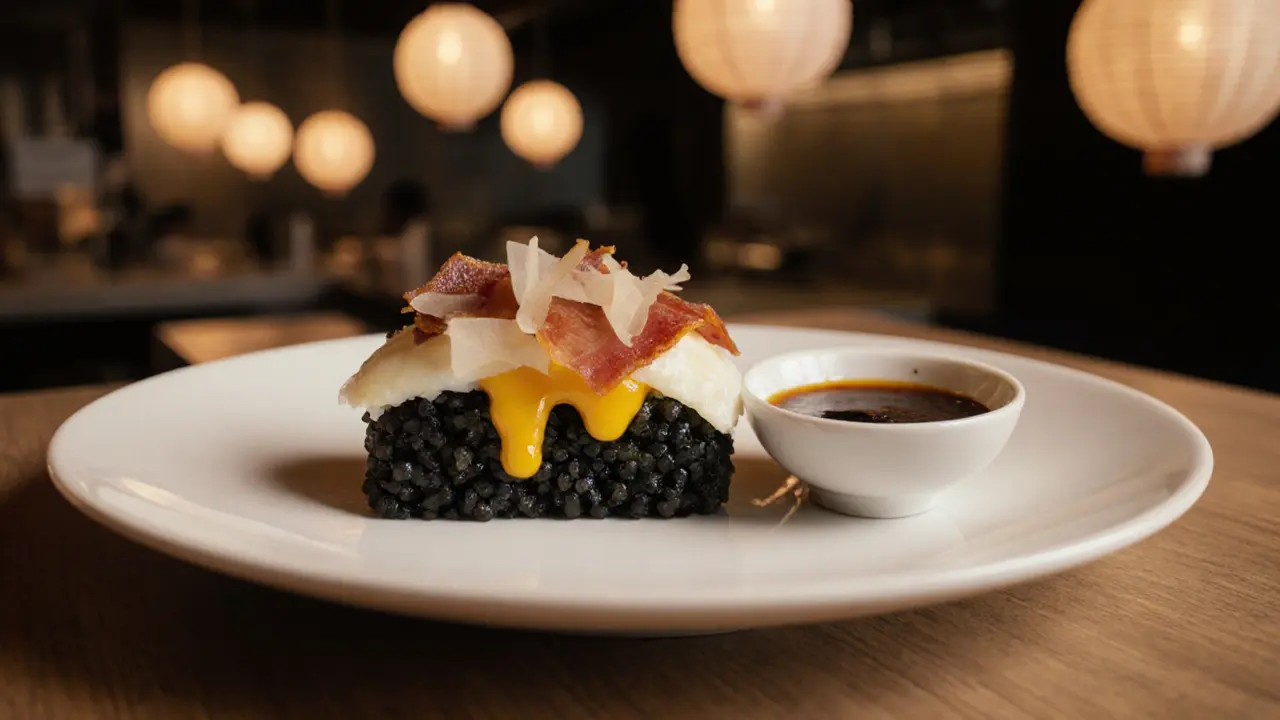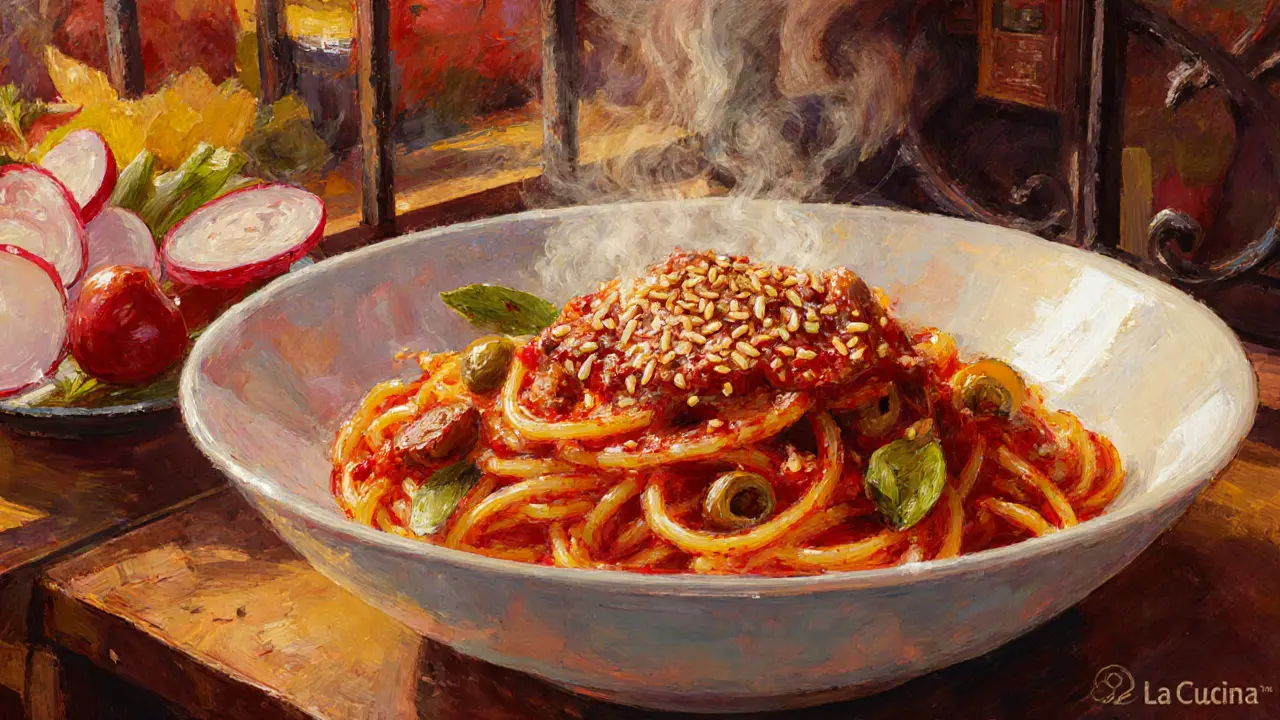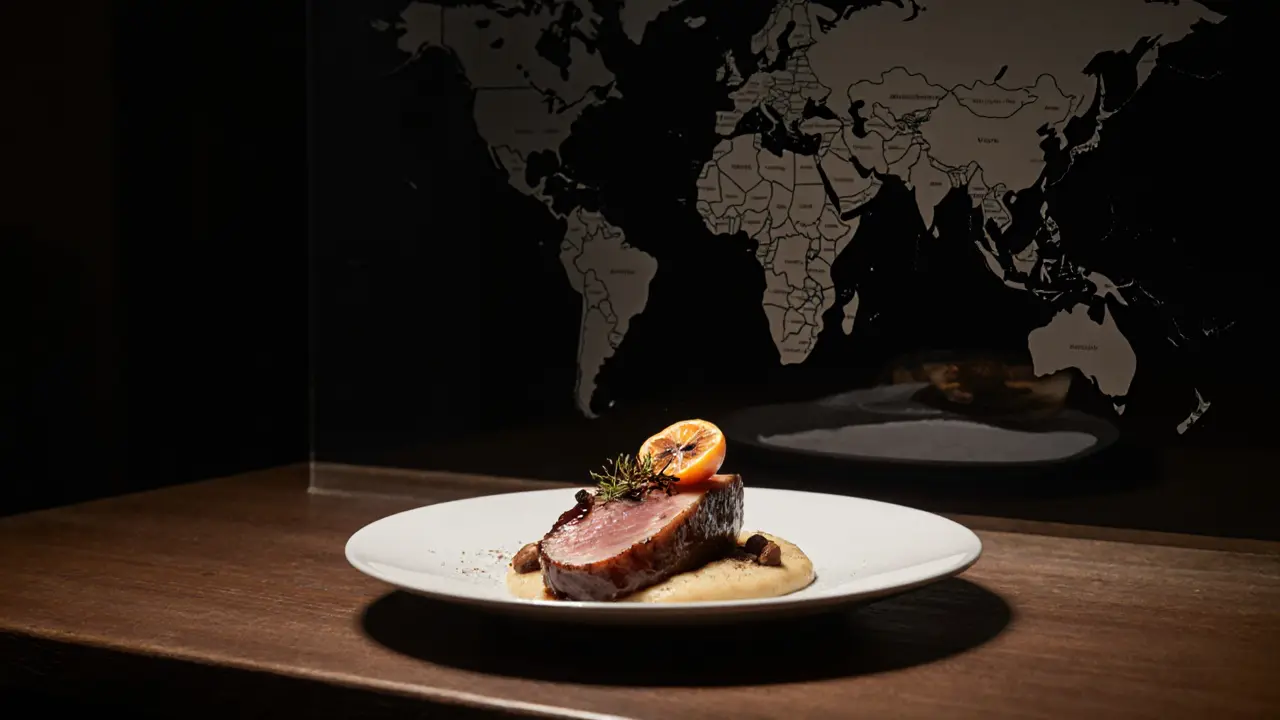Best Restaurants in Milan with Fusion Food

Milan isn’t just about pasta and risotto anymore. Over the last five years, the city’s dining scene has quietly exploded with bold, unexpected combinations-Japanese miso butter on handmade gnocchi, Korean gochujang-glazed osso buco, Peruvian anticuchos served with truffle polenta. If you’re looking for real innovation on a plate, Milan’s fusion restaurants are where it’s happening. Forget the tourist traps with fake ‘Italian-Chinese’ menus. These are kitchens run by chefs who’ve trained in Tokyo, Mexico City, and Bangkok, then came to Milan and refused to pick just one tradition.
What Makes Fusion Food Work in Milan?
Fusion isn’t just tossing soy sauce into a risotto and calling it a day. The best spots in Milan treat fusion like a conversation-not a collision. They understand that Italian ingredients are the foundation: fresh basil, aged balsamic, local seafood from Lake Como, and house-made pasta. Then they layer in techniques and flavors from elsewhere without overpowering the core. A dish might look Italian, but the umami depth comes from fermented black bean paste. The crunch? Toasted sesame and furikake, not breadcrumbs.
This isn’t random experimentation. It’s precision. Chefs here spend months testing ratios-how much yuzu to add without killing the acidity of San Marzano tomatoes, how long to sous-vide duck breast before searing it with a blowtorch and serving it over saffron risotto with pickled daikon. The result? Dishes that feel familiar but surprise you.
1. Sushi & Co. by Chef Marco Rossi
Don’t let the name fool you. This isn’t your average sushi bar. Chef Marco, who trained under Nobu in New York and later worked in Emilia-Romagna, opened this place in 2022 with one goal: make Italian ingredients speak Japanese. His signature dish-carbonara nigiri-uses pancetta from Parma, egg yolk from free-range hens, and Pecorino Romano shaved over black rice. The rice is seasoned with white wine vinegar instead of rice vinegar, giving it a brighter, more floral tang. It’s served with a side of truffle-infused soy dip. You won’t find this anywhere else in Italy.
They also do a risotto arancino: fried rice balls filled with saffron risotto, wrapped in nori, and drizzled with chili honey. It’s crunchy, creamy, sweet, and spicy-all in one bite.
2. La Cucina del Mercato
Tucked inside the historic Mercato Centrale, this is where Milan’s young professionals go after work. The chef, Sofia Moretti, grew up in Naples but spent five years in Bangkok. Her menu reads like a travel journal: Neapolitan ragù with Thai basil and coconut milk, beef tartare with yuzu, ginger, and giardiniera, and gnocchi with miso brown butter and toasted hazelnuts.
The standout? The spaghetti alla puttanesca with gochujang. Traditional puttanesca-capers, olives, anchovies, garlic-is given a Korean twist with a spoonful of fermented chili paste. It adds a deep, smoky heat that lingers without burning. The dish comes with a side of pickled radishes and a sprinkle of toasted sesame seeds. It’s bold, balanced, and unforgettable.
3. Osteria 1887
This is the quietest, most refined fusion spot in the city. Housed in a 19th-century palazzo near Brera, it’s run by two brothers-one trained in Lyon, the other in Lima. Their tasting menu changes weekly, but one constant is the duck breast with chestnut purée and miso glaze. The duck is brined in juniper and orange peel, then slow-roasted. The miso glaze is made with fermented soybeans from a small producer in Emilia, aged for 18 months. The chestnut purée is sweetened with honey from Lombardian beech trees. It’s earthy, rich, and surprisingly light.
They also serve a chocolate torta with matcha and sea salt-a dessert that’s been on the menu since day one. The chocolate is 72% dark from Venezuela, the matcha is ceremonial grade from Uji, and the salt is fleur de sel from Sicily. It’s served with a quenelle of mascarpone whipped with orange blossom water. It doesn’t taste like fusion. It tastes like harmony.

4. Bao & Bistecca
For a more casual vibe, head to this tiny spot near Porta Venezia. The concept is simple: Chinese steamed buns meet Italian grills. Their beef short rib bao is legendary. The meat is slow-braised in Barolo wine for 12 hours, then shredded and piled into soft bao buns with pickled mustard greens, hoisin sauce, and a smear of gorgonzola cream. It’s sweet, tangy, savory, and creamy-all at once.
They also do arancini with kimchi and mozzarella, and a prosciutto-wrapped melon with yuzu foam. The latter sounds odd, but the salt of the ham, the sweetness of the melon, and the citrusy fizz of the foam create a flavor that lingers like a memory.
5. Terra e Mare
Located near the Navigli canal, Terra e Mare is the only place in Milan where you can order a sea bass carpaccio with yuzu, chili oil, and Parmesan shavings-and it works. Chef Elena Rovelli spent years working in coastal Spain and Vietnam before returning to Milan. Her menu is all about bridging land and sea, East and West.
The octopus with sun-dried tomato pesto and sesame is their most ordered dish. The octopus is grilled over oak wood, then tossed in a pesto made from sun-dried tomatoes, garlic, and a hint of Thai basil. It’s finished with toasted sesame seeds and a drizzle of aged balsamic. The texture is tender, the flavor is layered, and the heat from the chili is subtle but present.
They also serve a risotto with squid ink, coconut milk, and lime zest. The coconut milk replaces cream, giving it a silky texture without heaviness. The lime cuts through the richness, and the squid ink adds depth. It’s a dish that feels both exotic and deeply Italian.
Why These Places Stand Out
What sets these restaurants apart isn’t just the ingredients-it’s the intention. Each chef has a story. They didn’t open a fusion spot because it was trendy. They did it because they were tired of choosing between the food they grew up with and the food they fell in love with abroad.
They use local ingredients because Milan’s market is too good to ignore. They borrow techniques because they respect them. And they don’t serve dishes that confuse the palate-they serve ones that expand it.
Most of these places book out weeks in advance. Reservations are non-negotiable. Walk-ins rarely get a table, especially on weekends. If you’re serious about trying this kind of dining, plan ahead. Most chefs offer a 7- to 10-course tasting menu that changes monthly. It’s worth every euro.

What to Avoid
Not every place calling itself “fusion” deserves your time. Stay away from spots that slap teriyaki sauce on pizza or serve sushi with parmesan. Those aren’t fusion-they’re confusion. Real fusion respects both cultures. It doesn’t mash them together. It weaves them.
Also, don’t expect cheap eats. These are high-end experiences. A meal here will cost between €80 and €150 per person. But you’re not just paying for food. You’re paying for craftsmanship, time, and a story on a plate.
When to Go
Best time to visit? Late September through November. The weather is crisp, the truffles are in season, and the city is quieter than in summer. Many chefs use this time to launch new tasting menus based on autumn ingredients-mushrooms, chestnuts, pomegranates, and late-harvest grapes.
Try to book a table for 7:30 PM. That’s when the kitchen is at its rhythm, and the staff has time to explain each dish properly. Don’t rush. These meals are meant to be savored.
Final Thought
Milan’s fusion scene isn’t trying to replace tradition. It’s adding to it. The city has always been a crossroads-of fashion, design, commerce. Now, it’s becoming one for food too. You can still have a perfect plate of cotoletta alla milanese. But now, you can also have a plate that tells you about a chef’s journey from Osaka to Milan, and how he found his voice between two worlds.
Are these fusion restaurants expensive?
Yes, most are high-end. A meal typically costs between €80 and €150 per person, especially if you go for the tasting menu. You’re paying for skilled chefs, rare ingredients, and time-intensive preparation. But it’s not just dining-it’s an experience. Many places offer a 3-course lunch menu for around €45, which is a more affordable way to try their style.
Do I need to make a reservation?
Absolutely. These restaurants are small, popular, and often fully booked weeks in advance. Walk-ins are rarely seated, especially on weekends. Use their websites or call directly. Some accept bookings via OpenTable or TheFork, but not all do.
Is fusion food in Milan authentic?
Authenticity here isn’t about sticking to one tradition-it’s about honesty in execution. The chefs use real ingredients from both cultures, not gimmicks. A miso-glazed duck breast isn’t “fake Italian.” It’s a thoughtful blend of Japanese technique and Lombard ingredients. If the dish tastes balanced and intentional, it’s authentic fusion.
Can I find vegetarian fusion options?
Yes, most of these restaurants offer strong vegetarian choices. Look for dishes like miso-glazed eggplant with polenta, truffle risotto with yuzu zest, or pumpkin gnocchi with black garlic and sesame oil. Ask your server-they’re usually happy to customize a vegetarian tasting menu.
How is fusion food different from international cuisine in Milan?
International cuisine means a restaurant that serves food from one other country-like Thai or Mexican. Fusion means combining elements from two or more cultures into a single dish. So a Thai restaurant in Milan serves pad thai. A fusion restaurant might serve pad thai with Parmesan, truffle oil, and gnocchi instead of rice noodles. It’s a hybrid, not a copy.

Faron Wood
November 7, 2025 AT 08:43This is the most beautiful thing I’ve ever read about food. I cried when I got to the duck breast with chestnut purée and miso glaze. I didn’t know food could make you feel like you’re hugging your soul after a decade of loneliness. Milan didn’t just invent fusion-it invented catharsis on a plate. I’m booking a flight tomorrow. No, I’m not asking for advice. I’m just telling you. I’m coming.
kamala amor,luz y expansion
November 8, 2025 AT 14:52Let me be clear-this is cultural appropriation dressed up as ‘innovation.’ You think miso on gnocchi is ‘fusion’? In India, we’ve been blending spices with pasta since the Portuguese brought it here in the 1500s-and we didn’t need to call it ‘fusion’ to make it delicious. This is just Westerners rebranding what already existed as ‘cutting-edge.’ And don’t get me started on ‘ceremonial grade matcha’ in a chocolate torta. That’s not harmony. That’s performative exoticism.
Matt Morgan
November 9, 2025 AT 09:45I appreciate the nuance here, but I need to correct a subtle but critical error: the carbonara nigiri uses Pecorino Romano shaved over black rice-but Pecorino Romano is not traditionally used in carbonara. That’s a Roman cheese, yes, but carbonara uses guanciale and Pecorino Romano is often substituted in the U.S. for lack of guanciale. Here, the chef is doing something more radical: he’s using Parmesan-style cheese in a Japanese context, but calling it Pecorino? That’s a misstep. The dish works because of the white wine vinegar and the truffle soy, not because it’s ‘authentic.’ The integrity of the dish lies in its intention, not its labeling. And that’s what makes it brilliant.
Also, the octopus with sun-dried tomato pesto and sesame? That’s not ‘Italian-Vietnamese.’ That’s Ligurian meets Pho. The Thai basil is the clue. The chef knows what she’s doing. This isn’t fusion-it’s translation.
K Thakur
November 9, 2025 AT 14:19Wait-have you all noticed that every single chef mentioned has a Western name? Marco Rossi? Sofia Moretti? Elena Rovelli? That’s not a coincidence. This whole ‘fusion’ movement is just a front for Italian chefs to repackage their old menus with exotic buzzwords so they can charge €150 for a plate of rice with soy sauce. The real fusion? The one where your immigrant auntie in Milan makes curry with risotto and calls it ‘Sunday Special.’ No one writes about that. No one gives her a Michelin star. But she’s the one who actually blends cultures-without a press release.
And don’t get me started on the ‘tasting menu.’ That’s just a fancy way of saying ‘we’re going to feed you 10 tiny portions so you leave hungry but impressed.’ I’ve been there. I left with a stomachache and a credit card bill. And the chef? He smiled and said, ‘It’s an experience.’ Yeah. An experience in consumerism.
NORTON MATEIRO
November 10, 2025 AT 18:37For anyone new to fusion food, let me offer this: don’t think of it as ‘Italian + Japanese.’ Think of it as ‘a person who loves both, and refused to choose.’ That’s the heart of it. These chefs aren’t trying to confuse you-they’re trying to show you that identity isn’t a box. You can be from Milan and still dream in miso. You can be from Tokyo and still crave fresh basil. The magic isn’t in the ingredients. It’s in the humility it takes to let two cultures sit at the same table without one dominating the other.
And yes, it’s expensive. But so is a concert ticket to your favorite artist. Or a flight to see your family. This is art. And like all art, it’s worth paying for-if you’re ready to feel something.
Rahul Ghadia
November 11, 2025 AT 20:25Let’s be real: if you’re going to call it ‘fusion,’ then you better have a PhD in culinary anthropology, a visa history that spans at least three continents, and a journal entry from 2017 that says, ‘I finally understood umami after crying over a bowl of ramen in Kyoto.’ Otherwise, you’re just a chef with a fancy spice rack. And that’s not fusion-that’s food porn. Also, why is everyone using ‘yuzu’ like it’s a magic bullet? There are 12,000 citrus varieties on Earth. Why not try kaffir lime? Or bergamot? Or-gasp-calamansi? No? Because ‘yuzu’ sounds exotic to Americans. And that’s the real problem here.
lindsay chipman
November 12, 2025 AT 03:27Let’s deconstruct the economic model of this ‘fusion’ phenomenon: it’s a premiumization strategy leveraging cultural capital as a luxury good. The chefs are commodifying diasporic culinary knowledge-extracting value from non-Western techniques while rebranding them as ‘innovative’ through the lens of Italian terroir. This isn’t fusion-it’s culinary gentrification. The consumers? They’re not foodies. They’re status-seekers buying symbolic capital through tasting menus. And the real victims? The immigrant cooks who actually developed these hybrids in the shadows, working 80-hour weeks in back kitchens, never getting credit. This is the neoliberalization of heritage. And it’s ugly.
Also, ‘truffle polenta’? That’s not fusion. That’s a rich person’s way of saying, ‘I want the earthy taste of the forest, but I don’t want to get my hands dirty.’
Roberto Lopez
November 12, 2025 AT 11:37I went to Sushi & Co. last month. Ordered the carbonara nigiri. It was good. Not amazing. The rice was a little too sticky. The yolk was overcooked. The truffle soy? Too salty. I’ve had better in Tokyo. And in Rome. And in my grandma’s kitchen. So yeah-this is nice. But don’t act like it’s the second coming. I’ve seen better fusion in a food truck in Brooklyn. Just saying.